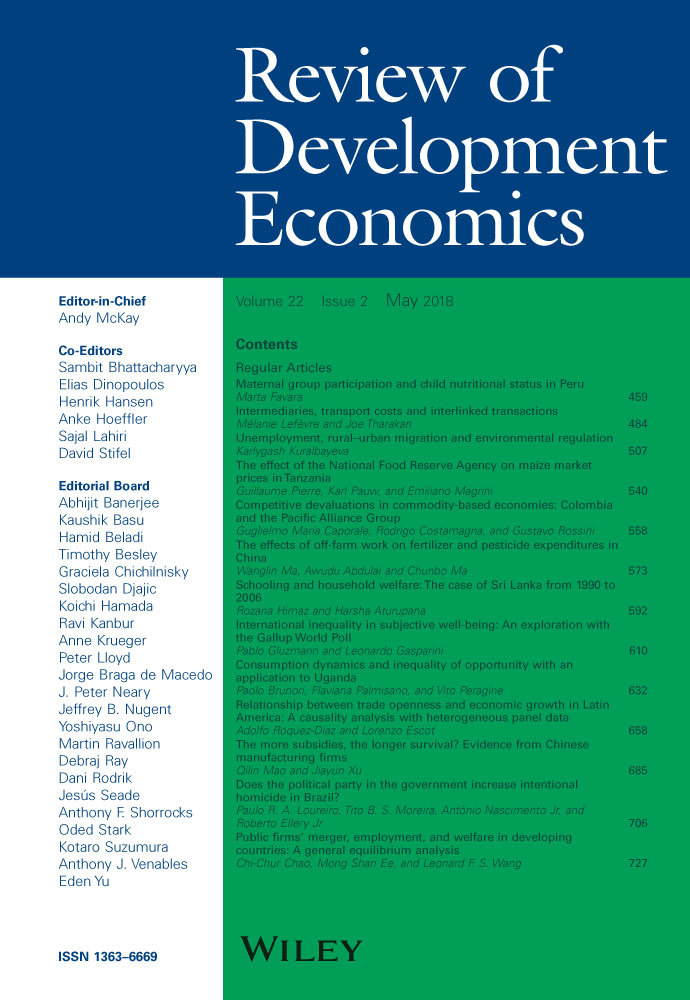Schooling and household welfare: The case of Sri Lanka from 1990 to 2006
Abstract
This paper looks at the effect schooling has had on household welfare in Sri Lanka during the 1990–2006 period, on average and across the welfare distribution. We account for the endogeneity of schooling using quantile instrumental variable estimation as developed in Chernozhukov, Fernández-Val, and Kowalski (2015). We use pooled data from four cross-sectional Household Income Expenditure Surveys. The results show that an extra year of schooling on the part of the most educated adult member in the household can increase welfare (proxied by real per capita consumption expenditure) by 3.8 percent on average. However, the effect varies considerably across the welfare distribution: At the lower end, around the 20th and 25th quantiles, an extra year of education increases welfare by 6 and 5 percent, respectively, while at the median it is around 3.5 percent. At the higher, 90th quantile it is much less, at 1 percent. Thus the marginal effect of schooling on welfare is significant and positive at all levels of the welfare distribution, but highest at the lower and middle quartiles. This result is different from findings in the literature that tend to show larger effects at higher quantiles, when endogeneity is uncorrected.




